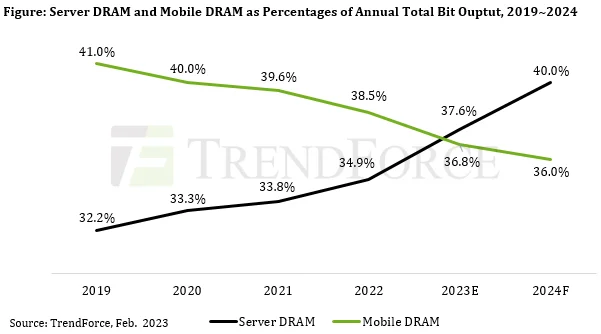Samsung Electronics Loses A Whopping $3 Billion in Two Months From Its Memory Chip Business

Media in South Korea indicate that Samsung Electronics lost 3 trillion won ($2.3 billion) in the first two months of this year from its memory chip business, and that the loss for the whole quarter might be significantly worse.
When the market slump continues into 2023, the South Korean chipmaker predicted that its operational loss might grow to 4 trillion won by the end of the first quarter.
Internally, there was a report estimating an operating loss of up to 4 trillion won from the memory chip business in the first quarter.
Its semiconductor unit has a profitable foundry business, but the contract chip manufacturing unit is not large enough to mitigate the huge losses in the memory business. A loss of at least 2 trillion won in the device solutions (DS) unit is inevitable.
South Korean Media
Until the dramatic decline in semiconductor prices late last year, the electronics manufacturer’s Device System division was considered the company’s crown jewel since it earned the greatest profit. Smartphones, consumer electronics, and screens are just a few examples of parallel industries.
The semiconductor segment contributed 23.8 trillion won last year to the overall operating profit of the firm, which was 43.4 trillion won. Operating profit for the division was a total of 8.5 trillion won in the first quarter, 9.9 trillion won in the second quarter, and 5.12 trillion won in the third.
The fourth quarter was a disaster for the corporation, as operational profit dropped to 270 billion won, a drop of 97% year-over-year.
DRAM prices are at a drastic fall since the start of 2023. According to the most recent data from TrendForce, the average DRAM price, the memory that powers phones and Computers, fell by 34.4% in the fourth quarter, after a reduction of 31.4% in the quarter before.

The primary component marketed to data centers and business clients, storage memory (NAND), fared only marginally better, and the two periods rank among the worst falls seen since 2006.
In the second half of 2022, most memory chip manufacturers reduced output and postponed growth plans in reaction to a sharp worldwide economic slowdown. All three companies—Micron Technology Inc., SK Hynix Inc., and Kioxia Holdings Corp.—announced actions to attempt to control the market’s overstock.

Samsung is making a bet on the long-term expansion of memory goods, which will be fueled by the rising use of connected cars, artificial intelligence systems, and storage-hungry cloud services. The business predicted that the smartphone market would contract once again this year at its most recent earnings conference, while ChatGPT and other AI technologies are expected to enhance demand.
Yet, TrendForce also predicts that over the next years, the YoY growth rate will remain below 10%. It is also important to note that during the next years, services supported by technology connected to artificial intelligence will multiply.
Source: MyDrivers





